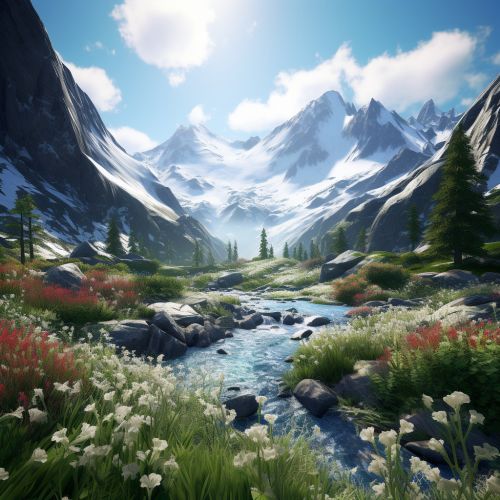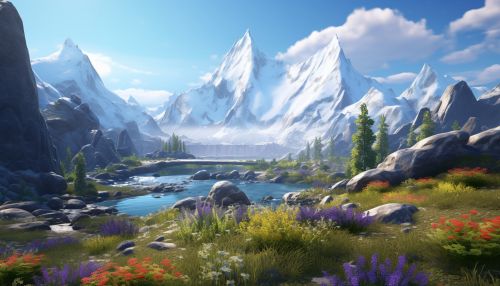Mechanisms of Glacial Refugia and Biodiversity Conservation
Introduction
Glacial refugia are areas that have remained unglaciated during periods of extensive glaciation, allowing the survival and persistence of species during ice ages. These refugia play a crucial role in conserving biodiversity, as they provide safe havens for species during periods of extreme climatic conditions. Understanding the mechanisms of glacial refugia is essential for predicting the impacts of future climate change on biodiversity and for developing effective conservation strategies.


Glacial Refugia: An Overview
Glacial refugia are typically located in areas that offer suitable climatic conditions and resources for species survival during periods of extensive glaciation. These areas can be isolated mountain ranges, valleys, or lowland areas that remain ice-free due to specific geographic or climatic factors. The concept of glacial refugia is rooted in the Quaternary glaciation period, during which large parts of the Earth's surface were covered by ice sheets and glaciers.
Mechanisms of Glacial Refugia
The mechanisms that enable certain areas to function as glacial refugia are complex and multifaceted, involving a combination of climatic, geographic, and ecological factors.
Climatic Factors
The climate of a region plays a significant role in determining its potential as a glacial refugium. Areas with milder climates and lower snowfall are less likely to experience extensive glaciation, making them potential refugia during ice ages. The microclimate of a specific location, influenced by factors such as altitude, aspect, and local weather patterns, can also create pockets of suitable conditions within a generally inhospitable landscape.
Geographic Factors
Geographic features such as mountains, valleys, and bodies of water can influence the glaciation process and create potential refugia. For example, high mountain ranges can act as barriers to ice sheet expansion, while valleys and lowland areas may remain ice-free due to their lower altitudes. Similarly, large bodies of water can moderate local climates and prevent the formation of glaciers.
Ecological Factors
The presence of certain plant and animal species can also contribute to the formation of glacial refugia. Some species are particularly resilient to cold temperatures and can survive in glaciated areas, providing a source of food and shelter for other species. Additionally, the ecological interactions between species, such as predation, competition, and mutualism, can influence the community structure within a refugium and its ability to support a diverse range of species.
Glacial Refugia and Biodiversity Conservation
Glacial refugia have significant implications for biodiversity conservation. By providing safe havens for species during periods of glaciation, these areas contribute to the maintenance of biodiversity at both local and global scales.
Role in Species Survival
During periods of glaciation, many species are forced to migrate to warmer areas or face extinction. Glacial refugia provide these species with a place to survive until conditions improve, thereby preventing their extinction. This is particularly important for species with limited dispersal abilities or specific habitat requirements.
Role in Species Diversification
Glacial refugia can also promote species diversification by creating isolated populations. When a species is confined to a refugium during an ice age, it may undergo genetic divergence from other populations of the same species, leading to the formation of new species. This process, known as speciation, is a key driver of biodiversity.
Role in Post-Glacial Colonization
Following the retreat of glaciers, species from glacial refugia can colonize newly available habitats. This process, known as post-glacial colonization, contributes to the re-establishment of biodiversity in previously glaciated areas.
Conservation Strategies Based on Glacial Refugia
Understanding the mechanisms of glacial refugia can inform conservation strategies aimed at preserving biodiversity in the face of climate change.
Identifying and Protecting Refugia
Identifying potential glacial refugia and implementing measures to protect these areas is a key conservation strategy. This may involve the establishment of protected areas, the implementation of habitat management practices, and the regulation of human activities that may impact these areas.
Assisted Migration
In some cases, it may be necessary to assist species in reaching glacial refugia. This strategy, known as assisted migration, involves the deliberate translocation of species to suitable habitats. While this approach is not without risks, it may be necessary for species that are unable to reach refugia due to barriers such as human development or geographic obstacles.
Climate Change Mitigation
Finally, efforts to mitigate climate change can help preserve glacial refugia and the biodiversity they support. This may involve reducing greenhouse gas emissions, promoting sustainable land use practices, and implementing measures to adapt to changing climatic conditions.
See Also
Conclusion
Glacial refugia play a critical role in biodiversity conservation, providing safe havens for species during periods of glaciation and contributing to species survival, diversification, and post-glacial colonization. Understanding the mechanisms that enable these areas to function as refugia is essential for predicting the impacts of future climate change on biodiversity and for developing effective conservation strategies.
